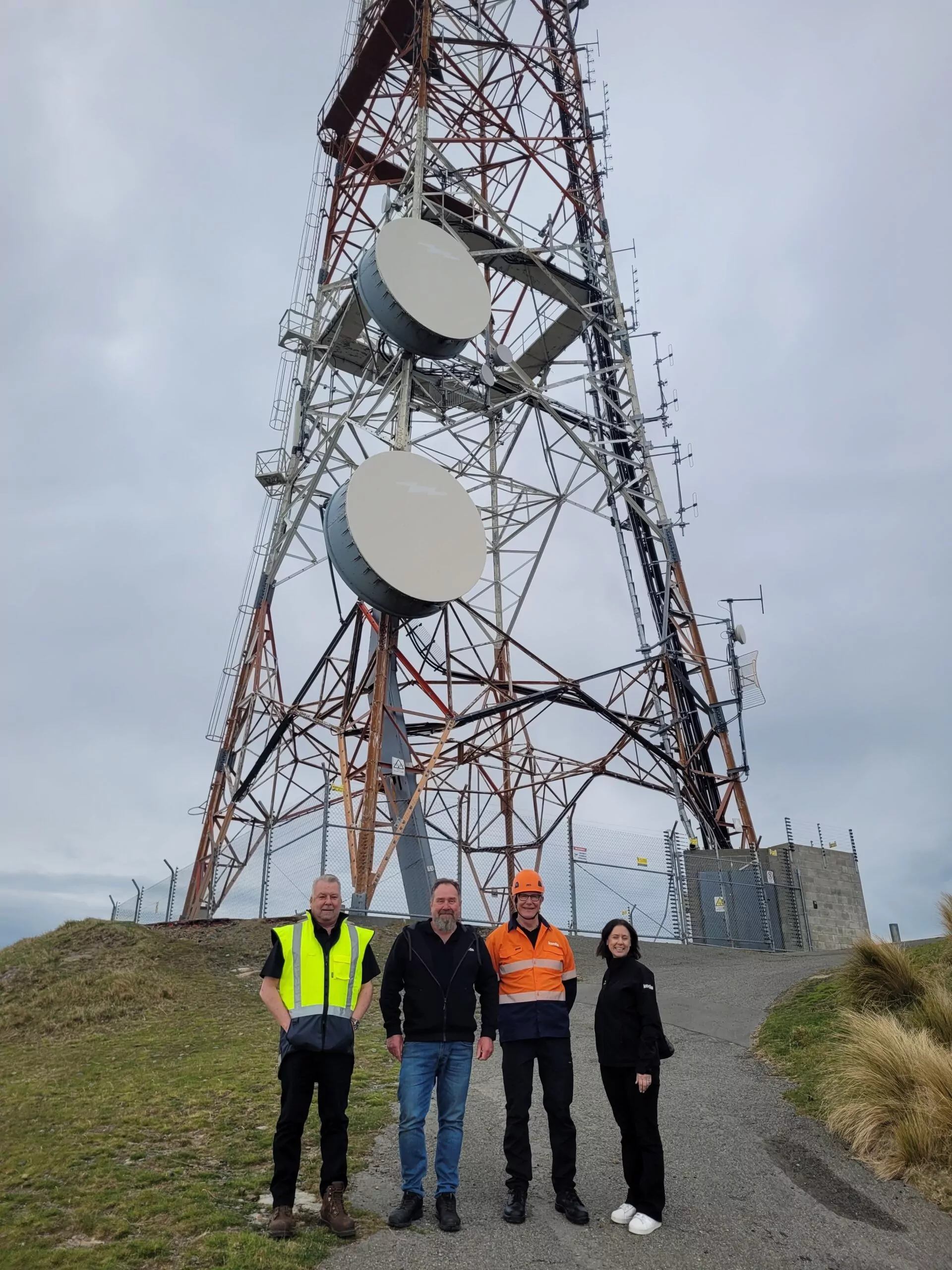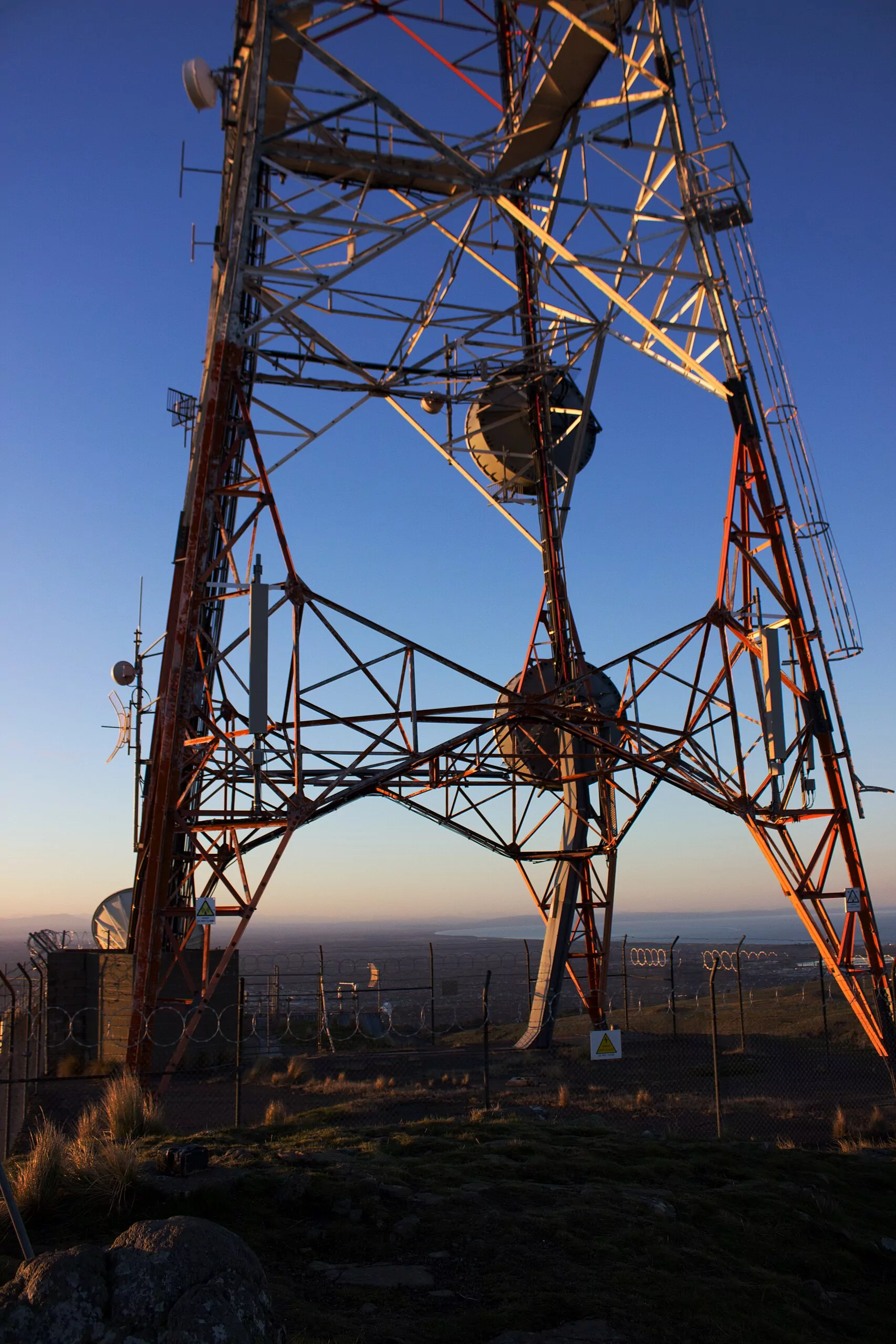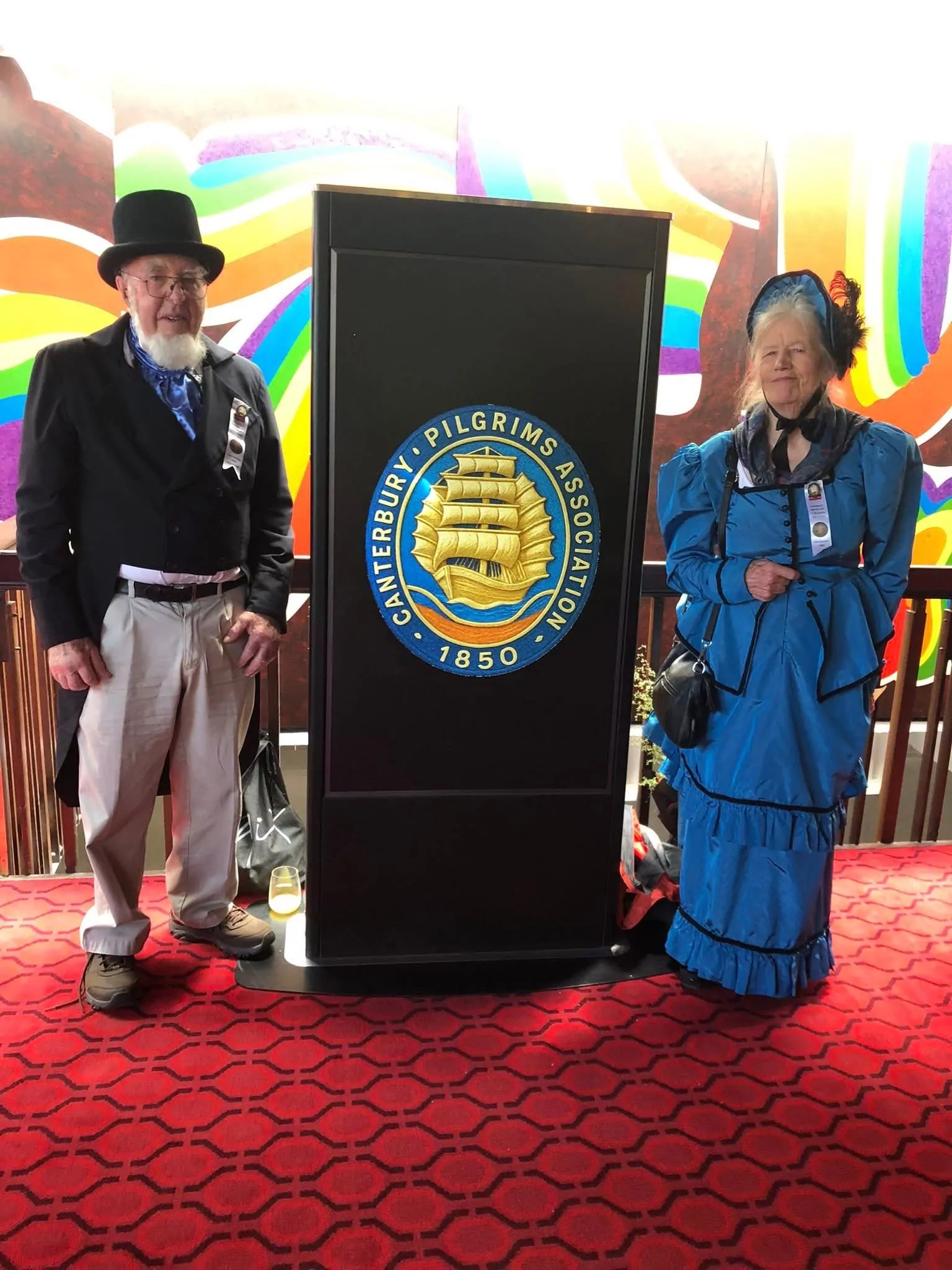Maths trial shows dramatic progress for students in only 12 weeks
A nationwide maths acceleration trial has shown major gains for Year 7 and 8 students...
Kordia is celebrating a major milestone this month, marking 60 years since the official opening of the Sugarloaf transmission tower on 16 October 1965.
To celebrate, the iconic Sugarloaf tower has been illuminated tonight, a glowing tribute to 60 years of keeping Canterbury connected
Standing 120.9 metres tall on Christchurch’s Port Hills, the steel landmark has kept Canterbury and much of New Zealand connected for six decades.

Neil Livingston (CEO – Kordia), Phil Shaw (Christchurch Field Team Leader – Kordia), Andrew Glue, and Jennifer Johnson (Head of Brand and Marketing – Kordia) at the Sugarloaf tower.
Built by Kordia’s predecessor, the New Zealand Broadcasting Corporation, as part of the country’s first nationwide television network, the Sugarloaf tower remains a vital part of New Zealand’s broadcast and communications infrastructure.
From its commanding position above the city, it continues to deliver television, FM radio, digital communications, and critical links for emergency services and aviation.
Few sites have witnessed as many nationally significant events as Sugarloaf. For much of that history, one man had a front-row seat.
Andy Glue, who retired in 2024 after 50 years with Kordia, began his career at just 17 as an apprentice technician at Sugarloaf.
He watched the site evolve from a single black-and-white television channel into a sophisticated digital connectivity hub.
“There were about 10 staff covering rostered shifts, seven days a week,” Glue said. “On a normal day shift we met at 8 a.m. at the Mowbray Street base and travelled to Sugarloaf in a Bedford van. We stayed all day and had to bring everything with us, including lunch.

“The duty technician was responsible for manually turning on the transmitters and running pre-programme checks. We took a full set of meter readings to detect faults and track any long-term issues that might indicate something was degrading.
“‘Goodnight Kiwi’ was our cue to switch everything off, lock the building, and drive back down the hill.”
From an engineering standpoint, Sugarloaf remains one of the country’s most impressive telecommunications structures. The lattice-steel tower sits on a five-metre-deep concrete pad anchored into volcanic rock, designed to withstand earthquakes and extreme weather.
Kordia Rigging Team Lead Stuart Stacey said maintaining the tower’s integrity had been a constant task.
“A lot of work happens up there – maintaining equipment, replacing bolts, installing ice shields, and managing corrosion. Over my career I’ve probably seen almost every bolt on that tower replaced,” he said.
A major strengthening project in 2005 saw almost every piece of steel and every bolt replaced, one of the most complex engineering feats in Kordia’s history.
Sugarloaf played a critical role in keeping Christchurch connected during its toughest times, including the 2011 earthquake.
“I was on call that day and sent to Sugarloaf to fix a fault,” Glue said. “The TVNZ live eye circuit was down, and they were desperate to get live coverage to Avalon Studio. I cautiously drove up Dyers Pass Road with rocks across the road and aftershocks still happening.”
His efforts, along with those of Kordia’s field and rigging teams, ensured vital communication links stayed open during the emergency response that followed.
The tower has endured snowstorms and fires, including the 1992 ‘Great Snow’, which cut off access entirely, and the 2017 Port Hills fires, which came dangerously close to the site.
Kordia Chief Executive Neil Livingston said the Sugarloaf anniversary was a celebration not only of engineering excellence but of people – the generations of technicians and engineers who have kept the region connected.
“Sugarloaf represents everything that defines Kordia: reliability, innovation, and service to the communities we connect,” Livingston said. “For 60 years, this site has delivered critical connectivity for broadcasters, emergency services, and everyday New Zealanders. The dedication of our people, like Andy and the teams who have worked here across the decades, makes this milestone truly special.”
Livingston said Kordia’s legacy of connectivity continues to evolve.
“From the early days of black-and-white television to today’s high-speed digital networks, Kordia has been at the heart of New Zealand’s communications landscape.
As we celebrate Sugarloaf’s 60th year, we’re also looking ahead – investing in technology that keeps New Zealand connected in smarter ways.”
Kordia’s link to Christchurch continues through its work on One New Zealand Stadium at Te Kaha, where the company is installing a Distributed Antenna System to deliver world-class mobile connectivity for fans and visitors.
“It’s fitting that 60 years after Sugarloaf was switched on, Kordia is again delivering vital communications infrastructure right here in Christchurch,” Livingston said. “In many ways, it brings our story full circle – connecting people then and connecting them now.”
The year 2025 marks 60 years since the completion of Kordia’s first iconic transmission towers – Mt Kaukau in Wellington, Waiatarua in Auckland, Sugarloaf in Christchurch, and Wharite in Manawatū.
Built by the New Zealand Broadcasting Corporation as part of the nationwide television network, these structures transformed broadcasting by extending coverage from major cities to the vast majority of New Zealand by the early 1970s.
Today, Kordia’s 50 lattice towers and sites continue to play a vital role, delivering digital terrestrial TV, FM radio, emergency communications, and other mission-critical services that keep New Zealand connected.


